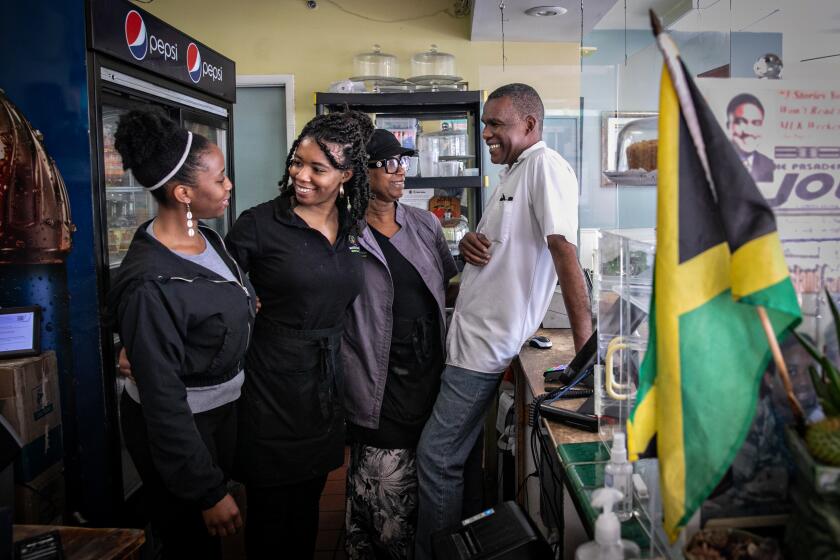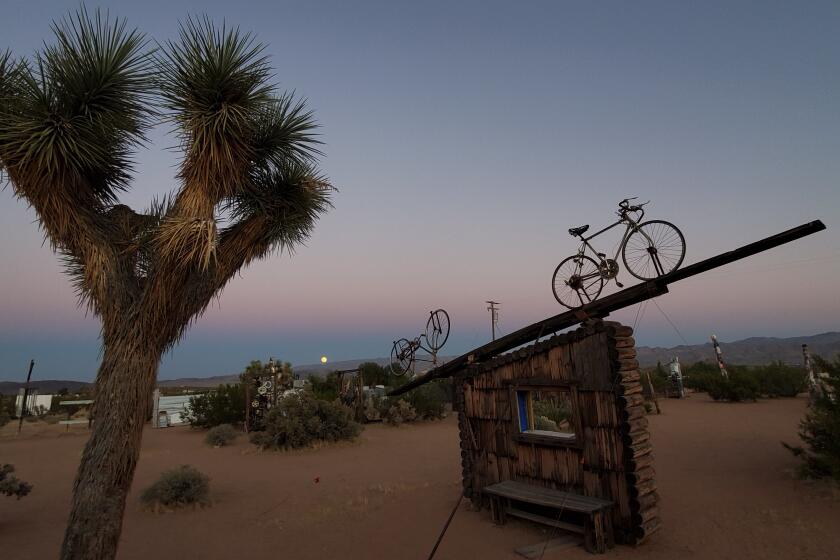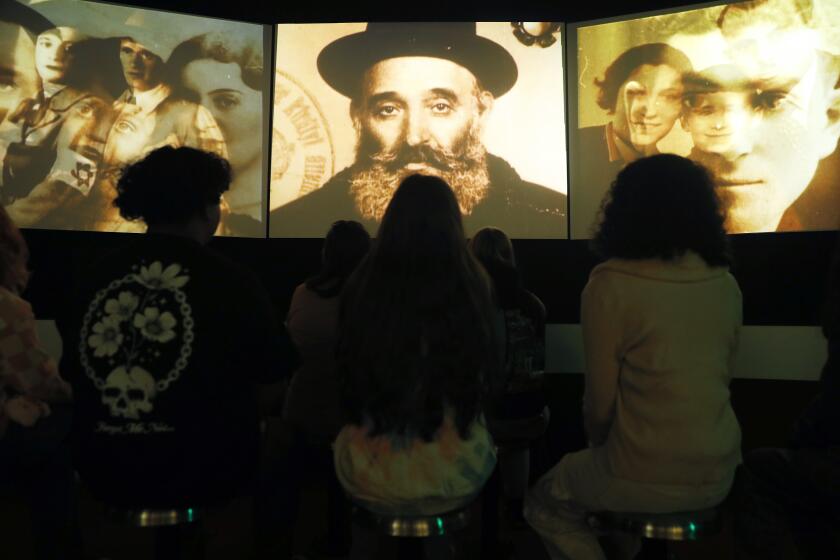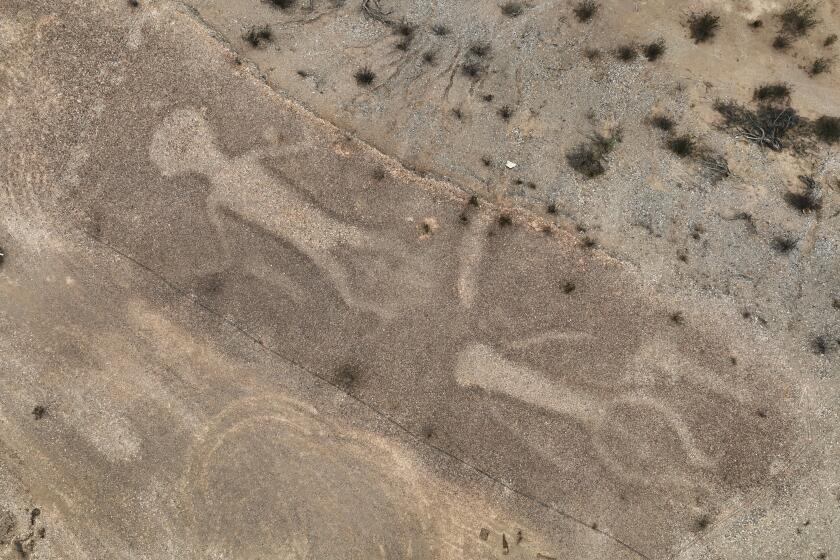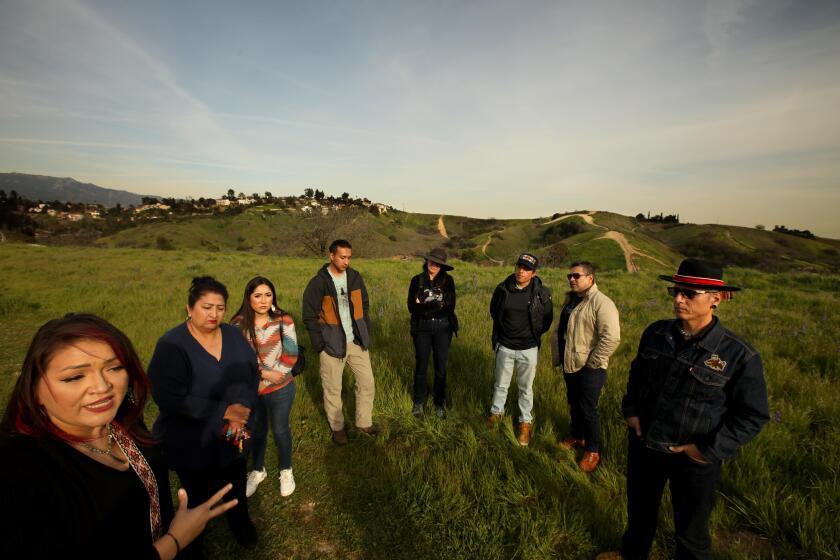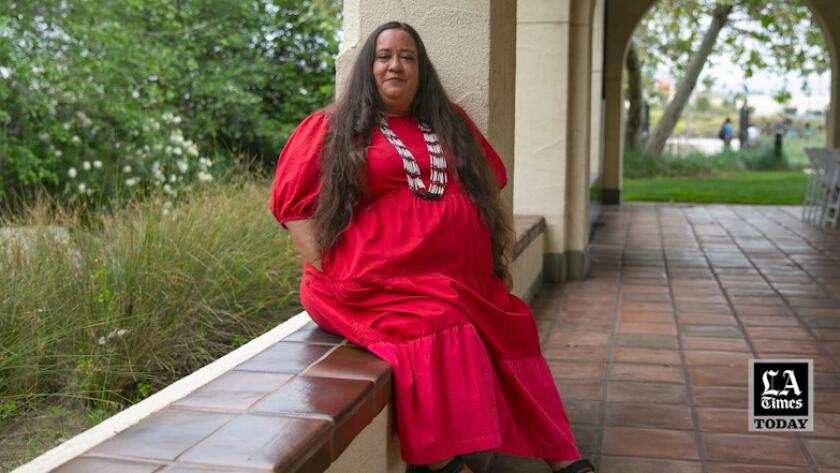- Share via
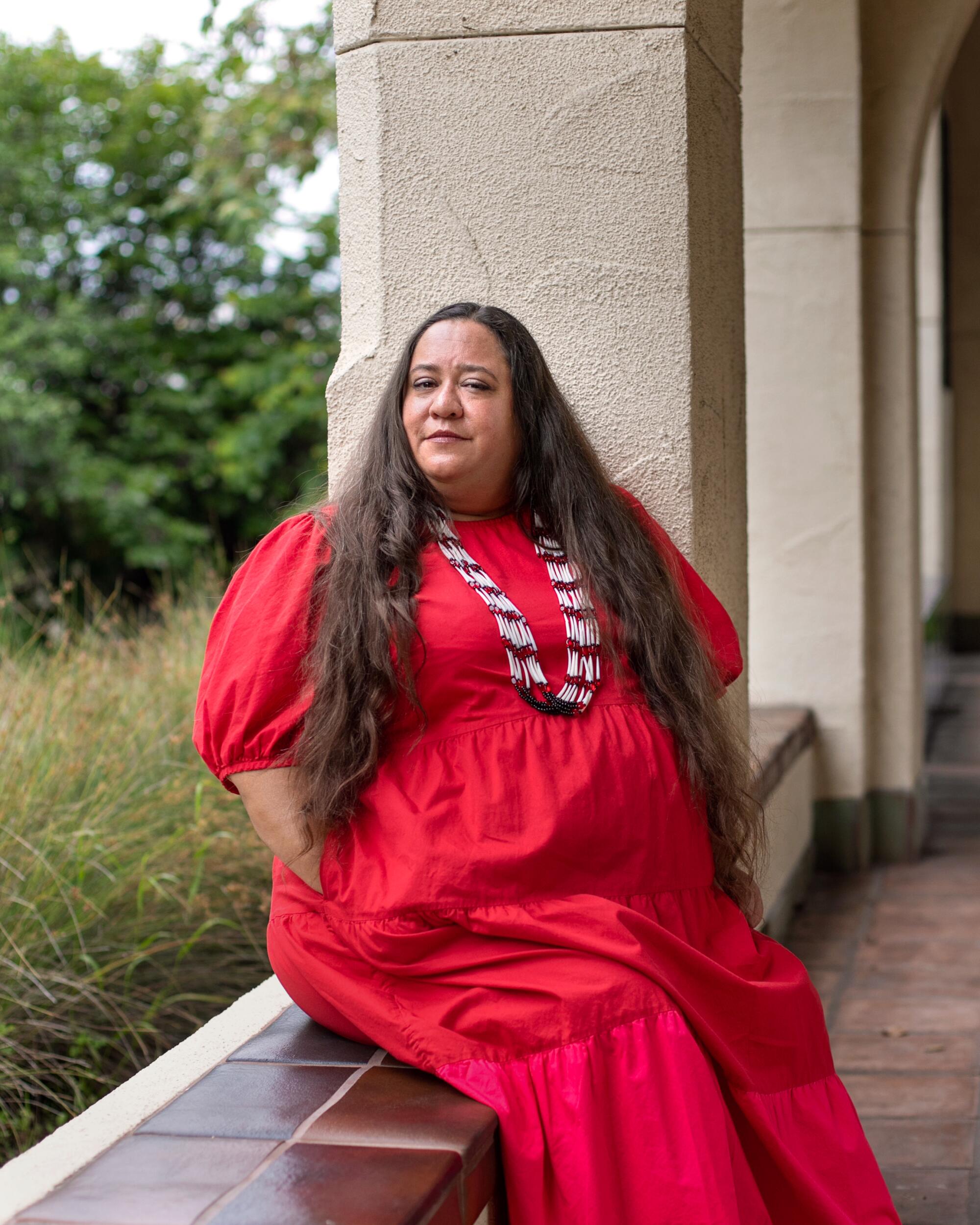
For Angela Mooney D’Arcy and other Indigenous Californians, a spirit of racial trauma hangs over some of the richest and most storied stretches of the Golden State.
California — like all of the Americas — is built on a stolen world, D’Arcy says.
The glamorous ocean-view houses of Malibu sit where the Chumash fished, hunted, played and performed rituals.
Every home run at Dodger Stadium soars over the ancestral grounds of “the people of the willow houses,” as the Tongva were known.
The luxury subdivisions, country clubs and surfing havens of Orange County occupy the heartland of the Acjachemen people — including D’Arcy’s ancestors — who believe their creator placed them at the edge of the Pacific at the dawn of time.
While countering repeated attempts to render them invisible, D’Arcy says, Indigenous people also felt a moral duty to look after the welfare of others within their reach. It’s a principle that her Acjachemen elders in Orange County instilled in her.
“People ask why I do anti-racism work — why I want to combat anti-Blackness — and I always say that it is a cultural mandate,” says D’Arcy, the founder of the nonprofit Sacred Places Institute for Indigenous Peoples in Los Angeles and an activist who fights racism.
That’s why she feels satisfaction but also sorrow as California moves closer to making history by giving reparations to Black Californians.
At long last, Black people have a chance to get justice for the wrongs they’ve experienced because of the color of their skin — potentially in the form of cash payments, one of the remedies proposed by the state’s reparations task force in the report it recently submitted to state lawmakers and Gov. Gavin Newsom.
D’Arcy worries, however, that the conversation around reparations fails to include Indigenous people and a basic truth: Slavery, the seizure of properties, the bulldozing of homes and businesses, the discriminatory real estate practices and biased treatment by law enforcement — everything that deprived Black and brown people of their wealth, their sense of belonging and sometimes their lives — took place on territory that was already scarred by loss.
Native people had acted as stewards of California’s shorelines, mountains, streams and deserts for millennia, only to watch outsiders strip away their lands, break up their families, ban their languages and decimate their ranks through disease and waves of violence.
The reparations debate remains one of the hottest topics in town, particularly in communities like Crenshaw, Leimert Park and Inglewood — the heart of Black L.A.
D’Arcy, 47, has been a champion of the movements to return land to the state’s tribal nations and save important sites from development and environmental degradation.
She was part of a coalition of Indigenous activists and environmentalists who joined forces to block a proposed six-lane toll road through an ancient Acjachemen village site and burial ground known as Panhe at Orange County’s San Onofre State Beach. Her organization helped stop a luxury housing development at Genga, a 400-acre Acjachemen and Tongva archaeological site in Newport Beach.
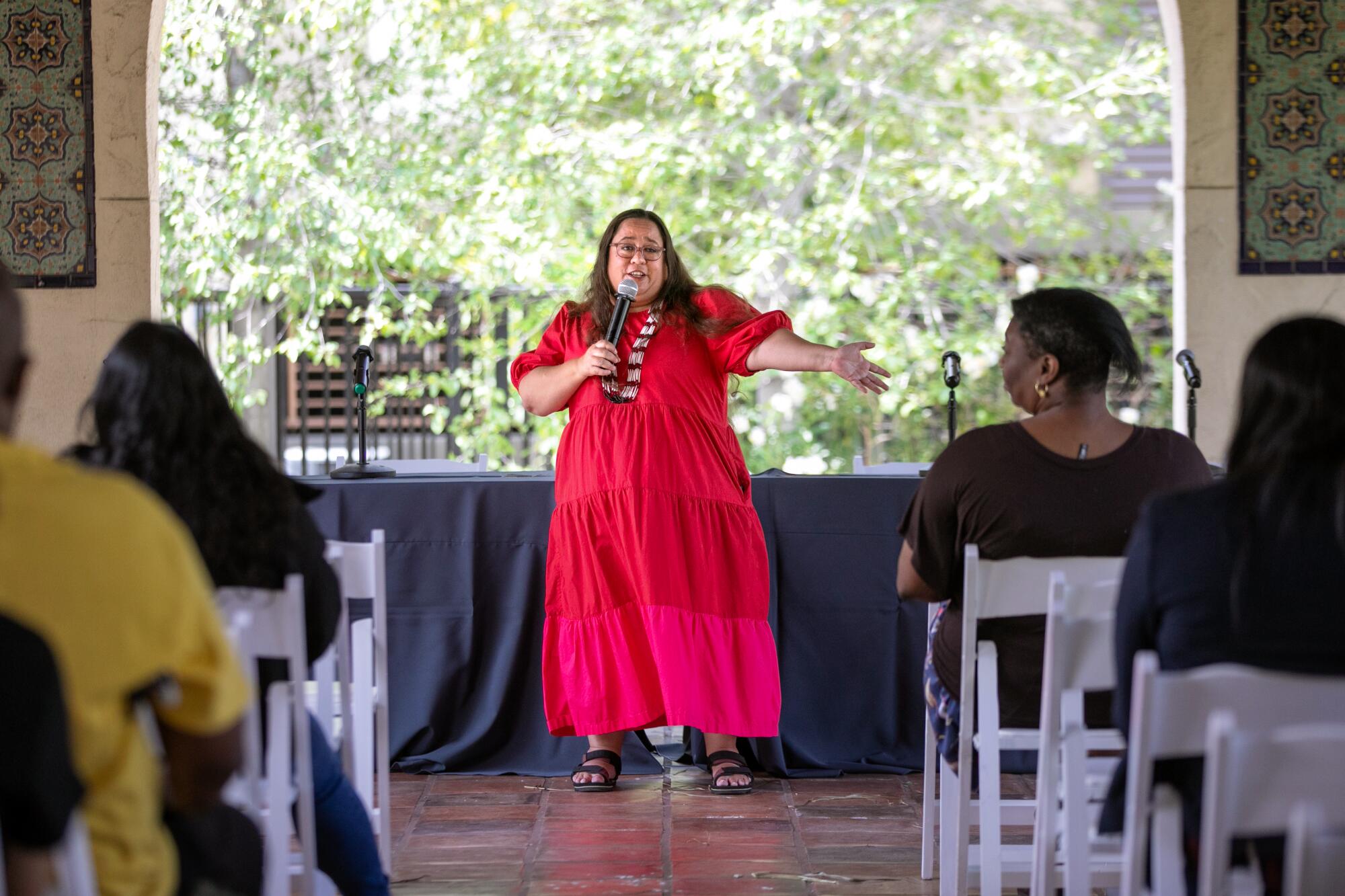
The goal in each instance is to ensure Indigenous people play a role in determining the state’s future, D’Arcy says, and to remind Californians that Native Americans still exist.
“Most people don’t know that there’s over 150 tribal nations in what’s now this state,” D’Arcy says.
And yet, even though much of the damage done to people of color took place on tribal grounds, D’Arcy senses an awkward silence between Indigenous people and other Californians when it comes to making amends.
“In the political realm, there’s just so much at stake and so much risk of being misquoted,” she says. “Nobody wants to touch it because they don’t want to be perceived as being anti-Indigenous or being anti-Black.
“The sad part is that important conversations that should be happening aren’t.”
::
The stories of Native Californians and other people of color overlap like bands of rock all across Southern California.
At the site of the baseball stadium near downtown L.A., civic boosters ushered in a new era of displacement in the 1950s when they leveled the homes of a predominantly Latino neighborhood — ignoring the protests of residents whose descendants are calling for restitution.
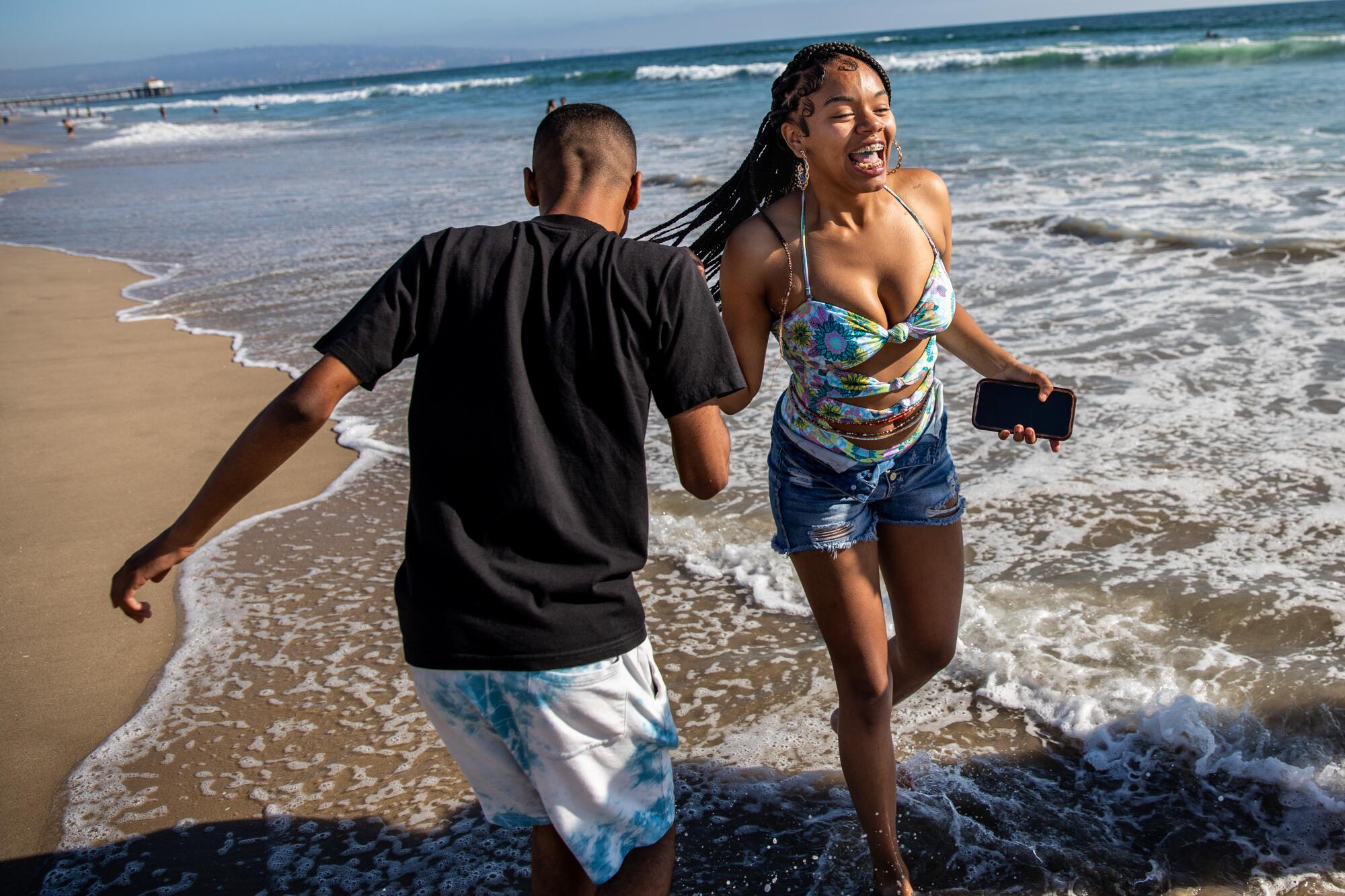
In Palm Springs, the Agua Caliente Band of Cahuilla Indians had welcomed Black transplants mainly from the Deep South to build homes on Section 14, a plot of their land near the hot springs downtown. In the early 1960s, however, local and federal officials declared those homes a blight, razing and burning them while the Agua Caliente watched helplessly from the sidelines.
Survivors of what the state decades ago declared a “city-engineered holocaust” in Section 14 are pressing Palm Springs officials to negotiate reparations for the families’ losses and subsequent hardships.
“We’re here to stay”: Black Californians put down roots in the desert
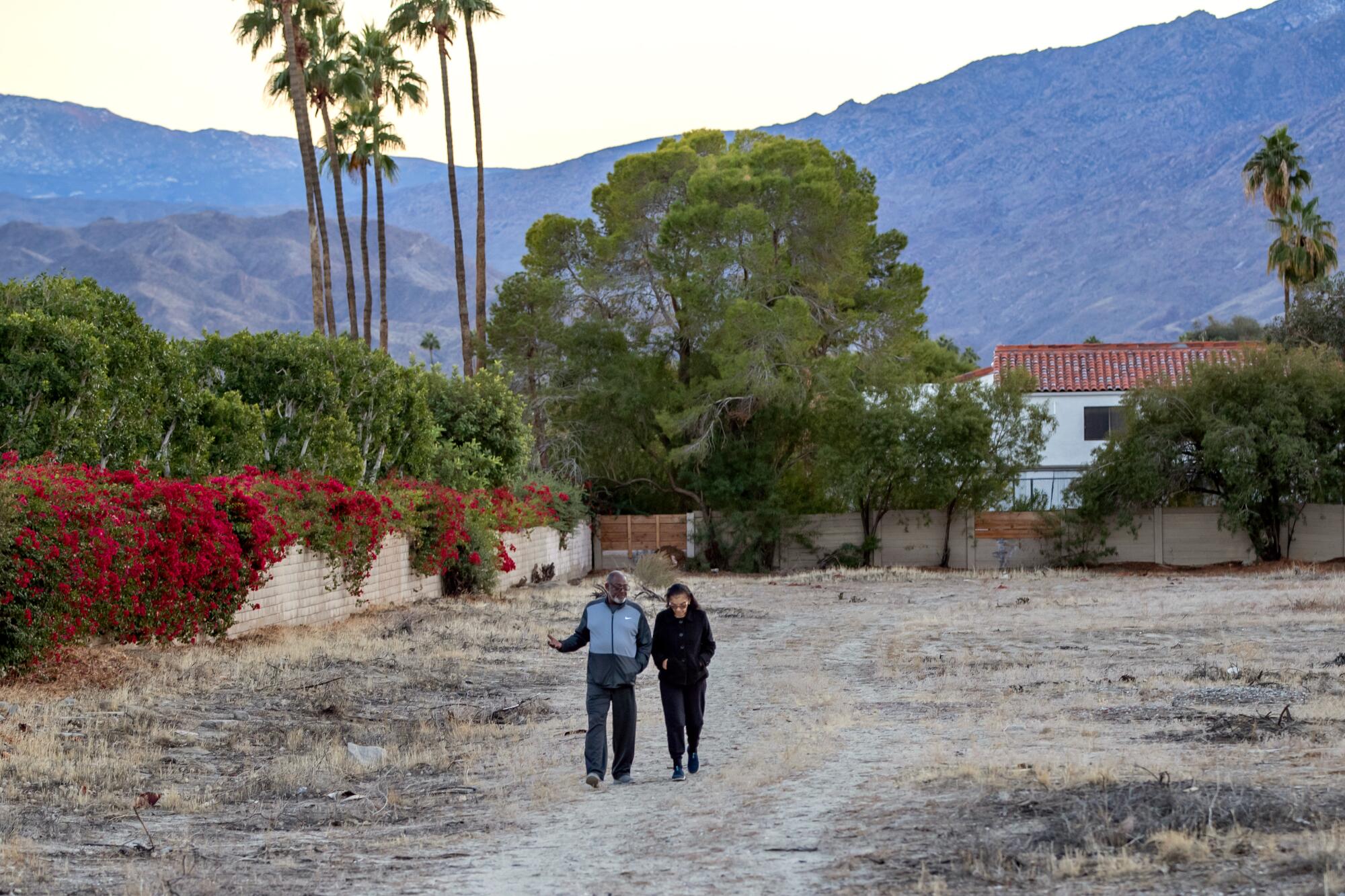
The disregard and dehumanization shown toward these disparate communities has been so breathtaking that the fallout can’t be measured in acres or dollars alone, or sufficiently captured in words, D’Arcy says.
Colonization “severed people’s relationships with their families, with their land, with their food, with their songs, with their stories,” she says. “The conversations about reparations and land rematriation — what that means first and foremost is thinking about healing the relationships that have been severed.”
D’Arcy’s work through the institute, a nonprofit that does advocacy, education and public events, is rooted in her desire for California to help affected communities achieve that healing — and to keep those in power, even ones with good intentions, from committing new wrongs.
The spike in antisemitism and other hate crimes in L.A. is grim, but a Jewish neighborhood in L.A. offers glimmers of hope.
The effort in Manhattan Beach to return waterfront property to the descendants of Willa and Charles Bruce showed D’Arcy how hard it can be to expand the discussion around restitution to include Native people.
The Bruces once ran a resort for Black vacationers that served as a haven on a coastline that was largely off-limits to people who looked like them, but it was seized through the racially motivated use of eminent domain in the 1920s.
When Los Angeles County officials were drafting a resolution on Bruce’s Beach in 2022 calling for the publicly owned site to be given back to the family, D’Arcy wrote a letter to the Board of Supervisors expressing concern that the measure “fails to recognize the Indigenous Peoples on whose sacred lands and waters Bruce’s Beach was established and who were violently and forcibly displaced from these homelands hundreds of years ago.”
The land was returned — and the family subsequently sold it back to the county for nearly $20 million. But officials rejected D’Arcy’s amendment acknowledging that the Gabrielino-Tongva were the “original caretakers.”
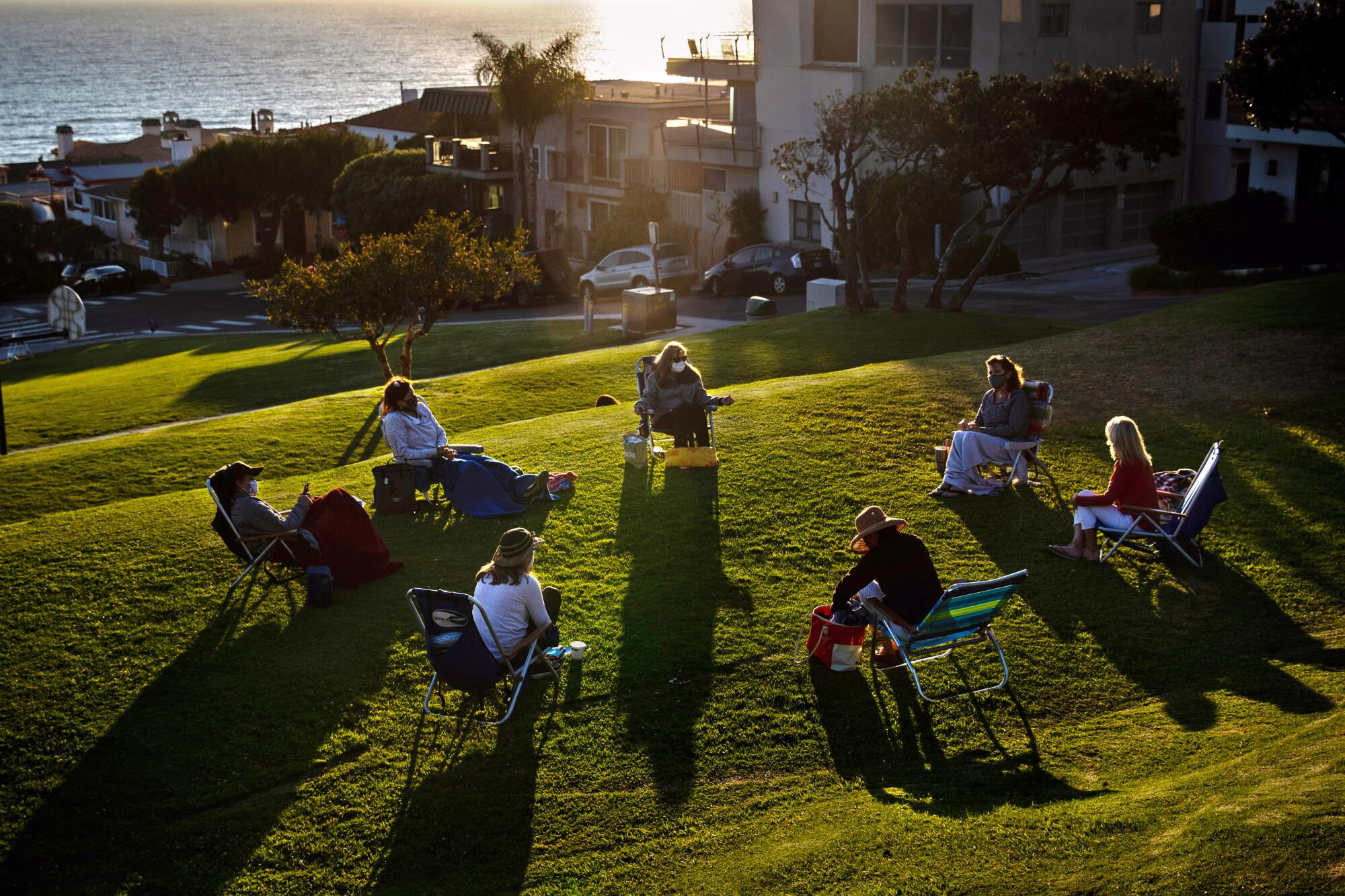
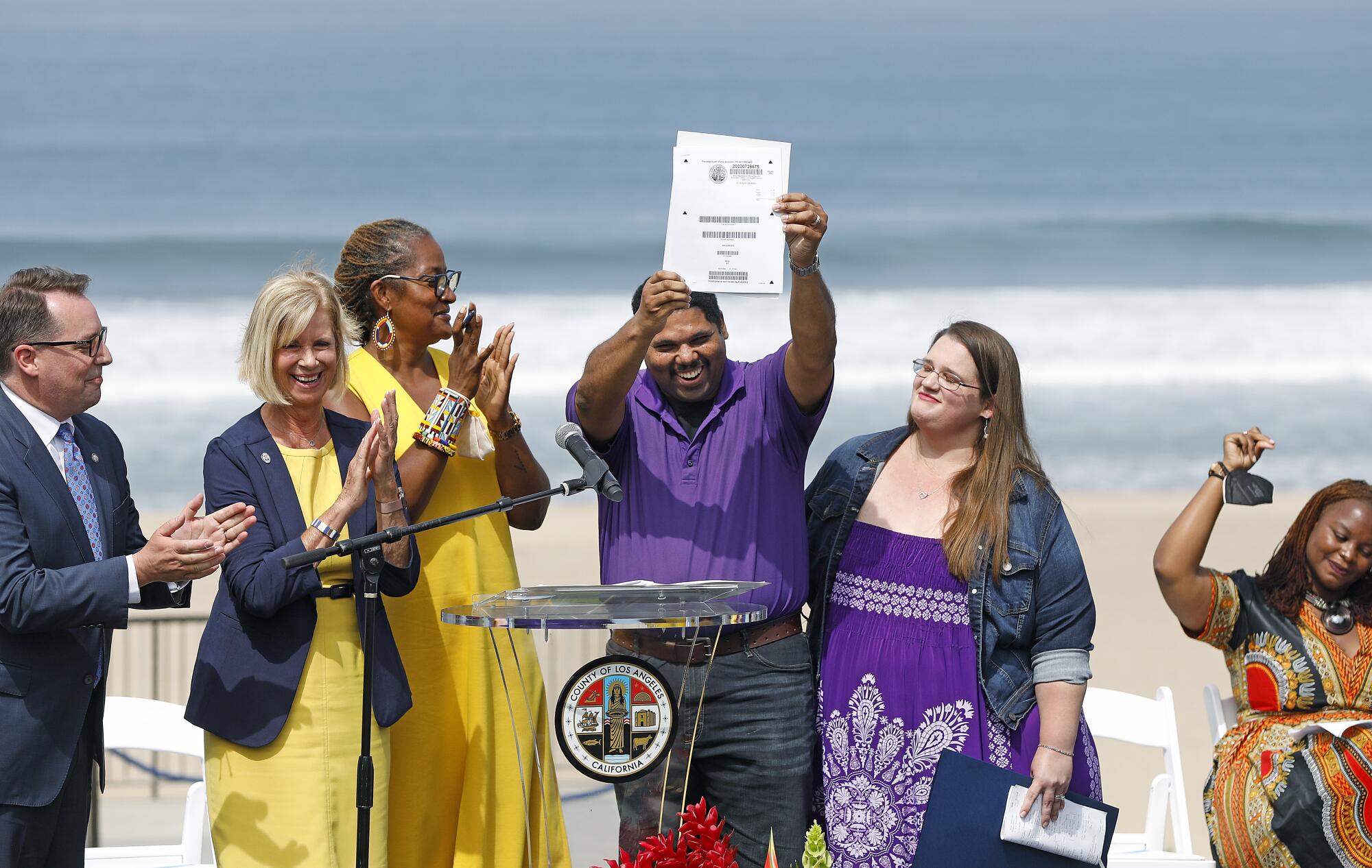
The denial stung.
“Having amended it, then that would have set a road map around the country — creating a standard whereby you can’t perpetuate the complete erasure of the people on whose lands this is happening,” D’Arcy says.
D’Arcy’s wish for a cross-cultural discourse is echoed by her friend Hop Hopkins, who is Black. Based in L.A., he’s the director of organizational transformation at the Sierra Club, the 131-year-old environmental group that in 2020 apologized for the anti-Black and anti-Indigenous remarks of its founder, John Muir.
“We both recognize that our liberation is bound together,” says Hopkins, 52.
“I catch heat for saying that,” he says, but “we can’t achieve Black liberation without acknowledging all of the hurt that has happened in the United States.”
Hopkins uses a word from the Tongva language to draw an analogy: kuuyam. It means “guests.”
Because non-Indigenous Americans are in a sense visitors on this continent, it is important to show respect toward the hosts, Hopkins says. That show of deference isn’t a threat to Black justice, he says, but rather an opening for mutual understanding.
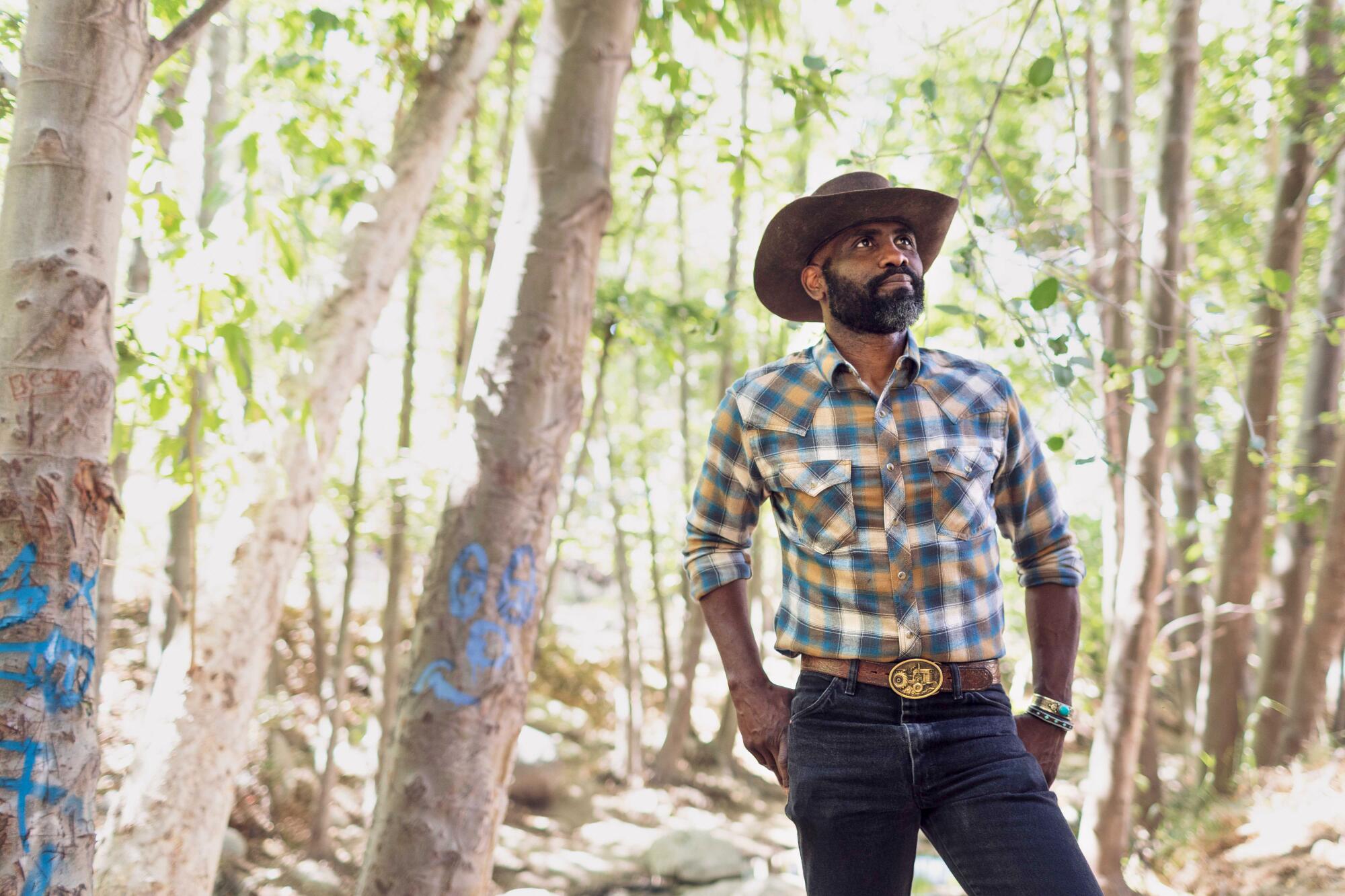
Black descendants of enslaved Americans like him have roots in Indigenous African civilizations, he says, and they’ve also resisted attempts to make them forget who they were and the societies they came from.
“We ought to be talking to the original stewards of the land, beginning there instead ... as two Indigenous peoples encountering each other, one as steward and one as guest,” Hopkins says. “Our Indigeneity is what connects us.”
A native of San Clemente who is the daughter of an Acjachemen man and a white woman, D’Arcy finds these similarities to the Black experience profound.
Pomona native Victor Glover Jr.’s selection for NASA’s Artemis II moon mission isn’t just historic. His fellow Black Americans say it will change how the world sees them — and how they see themselves.
She grew up feeling distanced from her Indigenous heritage while being raised by her mother in rural, mostly white Kansas. It meant so much to her to connect with her Acjachemen culture while living with relatives in San Juan Capistrano in the two years between attending Brown University and entering law school at UCLA.
“I know the void that I felt, and how amazing and whole I felt when I finally returned back to my community,” she says.
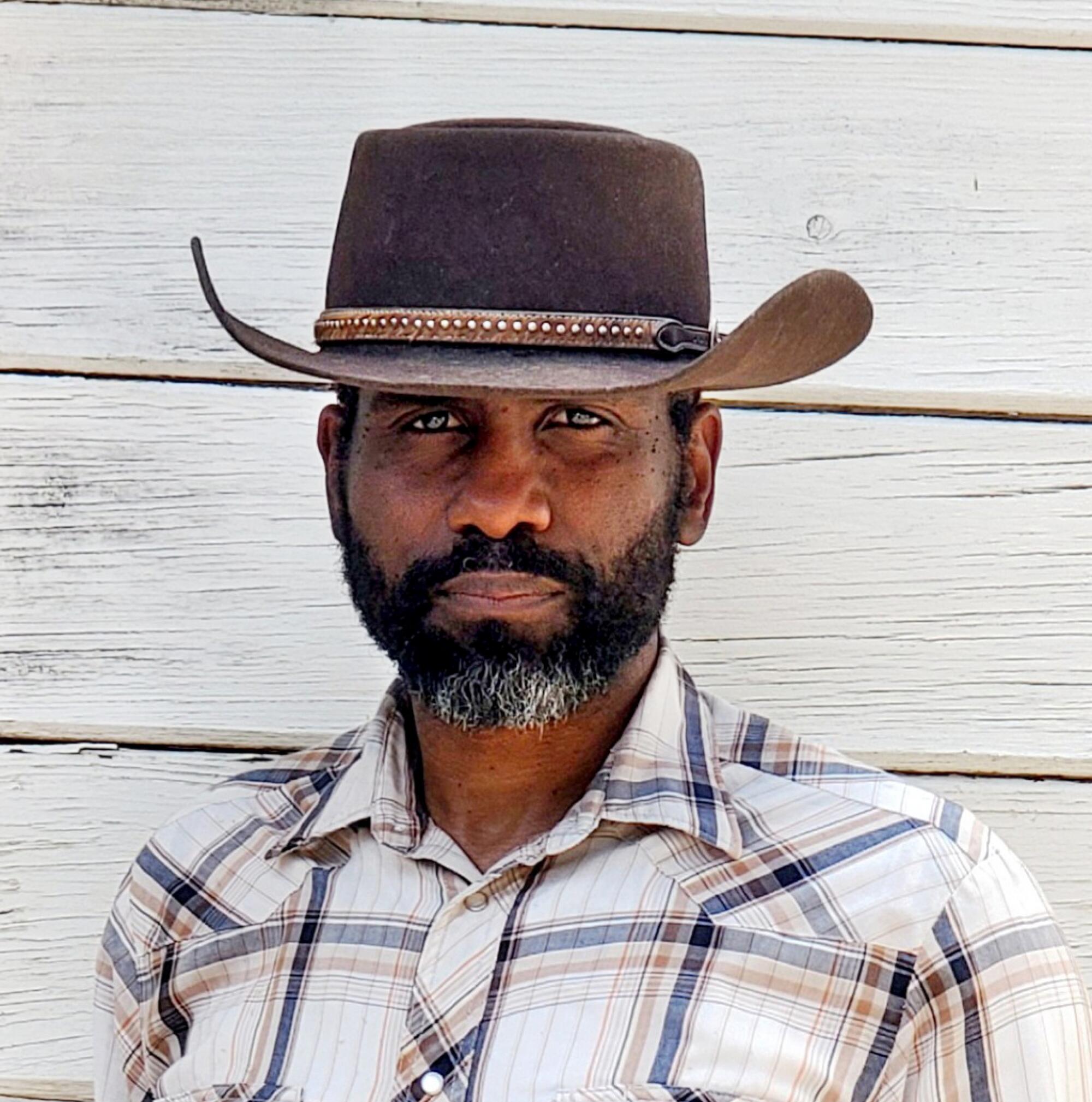
D’Arcy’s desire for common cause with other people of color grew stronger while she was studying law alongside Black and brown Americans and protesting with people from different races against a proposed oil pipeline on the Standing Rock Sioux Tribe reservation in North Dakota. She sat in on hearings in the mid-1990s of the Truth and Reconciliation Commission in post-apartheid South Africa and was horrified by the suffering that Indigenous Black South Africans experienced under the white minority.
“It’s really depressing and sad how similar the experiences were across the board, in terms of the racism and the white supremacist culture,” D’Arcy says, “that people had to encounter in all of these places.”
::
“What does it mean to be rooted to a place you have been dispossessed of?”
The prominent Tongva and Acjachemen scholar Charles Sepulveda poses this question in an essay exploring his people’s historical stewardship of the Santa Ana River in Orange County.
D’Arcy ponders that notion one day when her organization co-hosts a multiracial gathering to discuss the health of another desecrated body of water, the Los Angeles River, which is sacred to the Tongva.
The waterway looks like yet another concrete canal winding among freeway ramps, warehouses and bungalows.
As climate change and overuse threaten the Colorado River, Native American tribes seek a larger role in the river’s stewardship.
In the middle, though, a stream rushes around elderberry trees growing out of pebbly islets, hinting at what the river might have looked like before Spanish settlers arrived.
D’Arcy’s two staffers, Gabriella Lassos, who is Tongva, and Spencer Jaimes, who is Chumash, are overcome by a malaise of a spiritual sort.
“It’s always jarring to come to the river — the concrete and then nonnative plants and everything is so manicured,” says Lassos, 24.
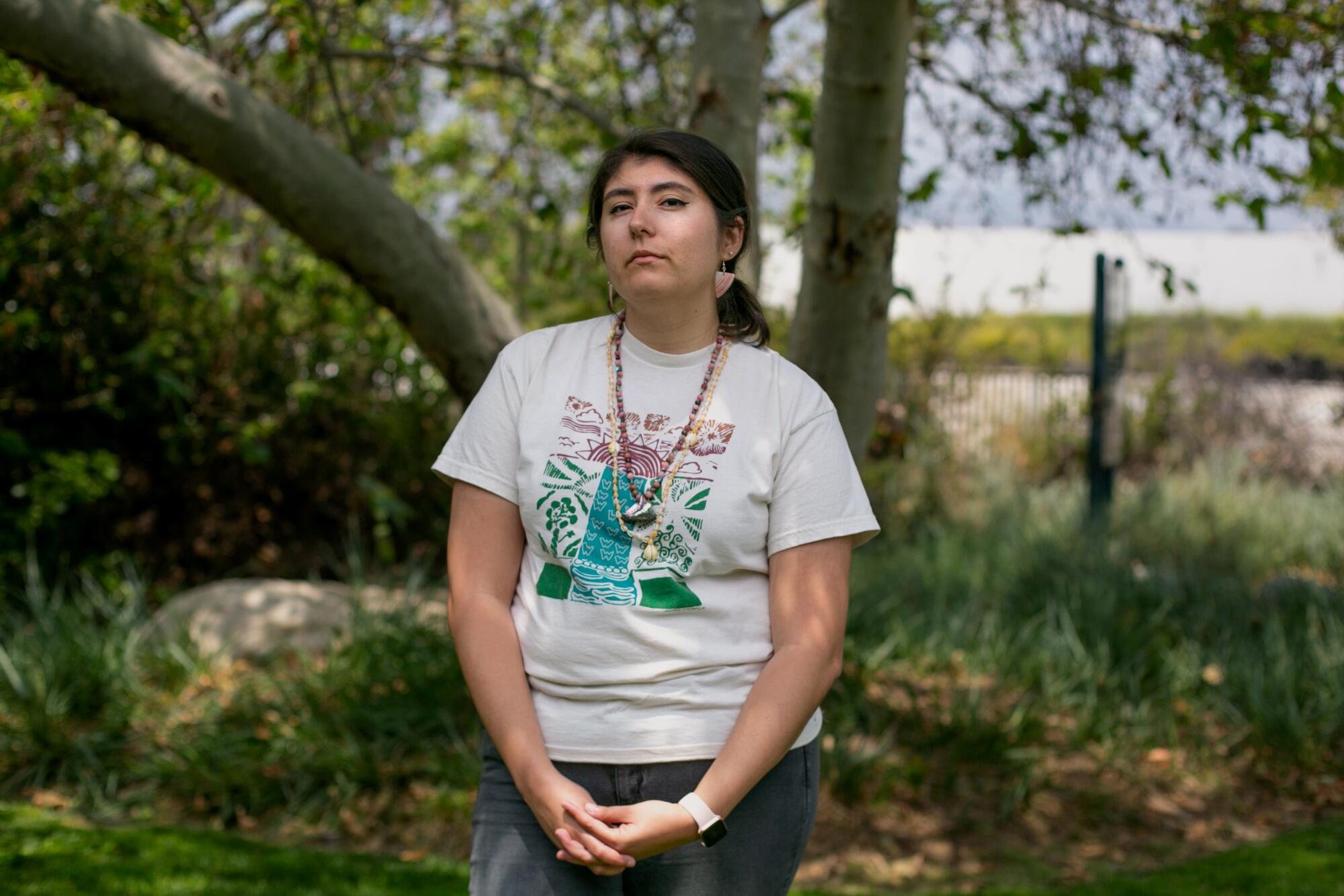
Lassos and Jaimes share D’Arcy’s mix of gratification about and yearning for reparations.
“It’s amazing to hear that L.A. is like, ‘Yes, let’s give land back,’ but I think, ‘Yes, let’s give land back, but to all of the people who you’ve stolen land from,’” Lassos says.
Jaimes, 20, lives in Santa Barbara. The Channel Islands National Marine Sanctuary, visible from Pacific Coast Highway north of L.A., is the birthplace of his Chumash ancestors, who have plied the surrounding waters in wooden-plank tomol canoes for more than 2,000 years.
He wears a silver fish hook pendant around his neck in honor of his people’s maritime prowess. Multiple emotions wash over him while paddling the 20-mile distance across the channel alongside dolphins and whales.
“It’s beautiful. It’s safe. It’s home,” he says. “My family, we were islanders until the Spanish took us off.”
Access to the islands today is heavily restricted.
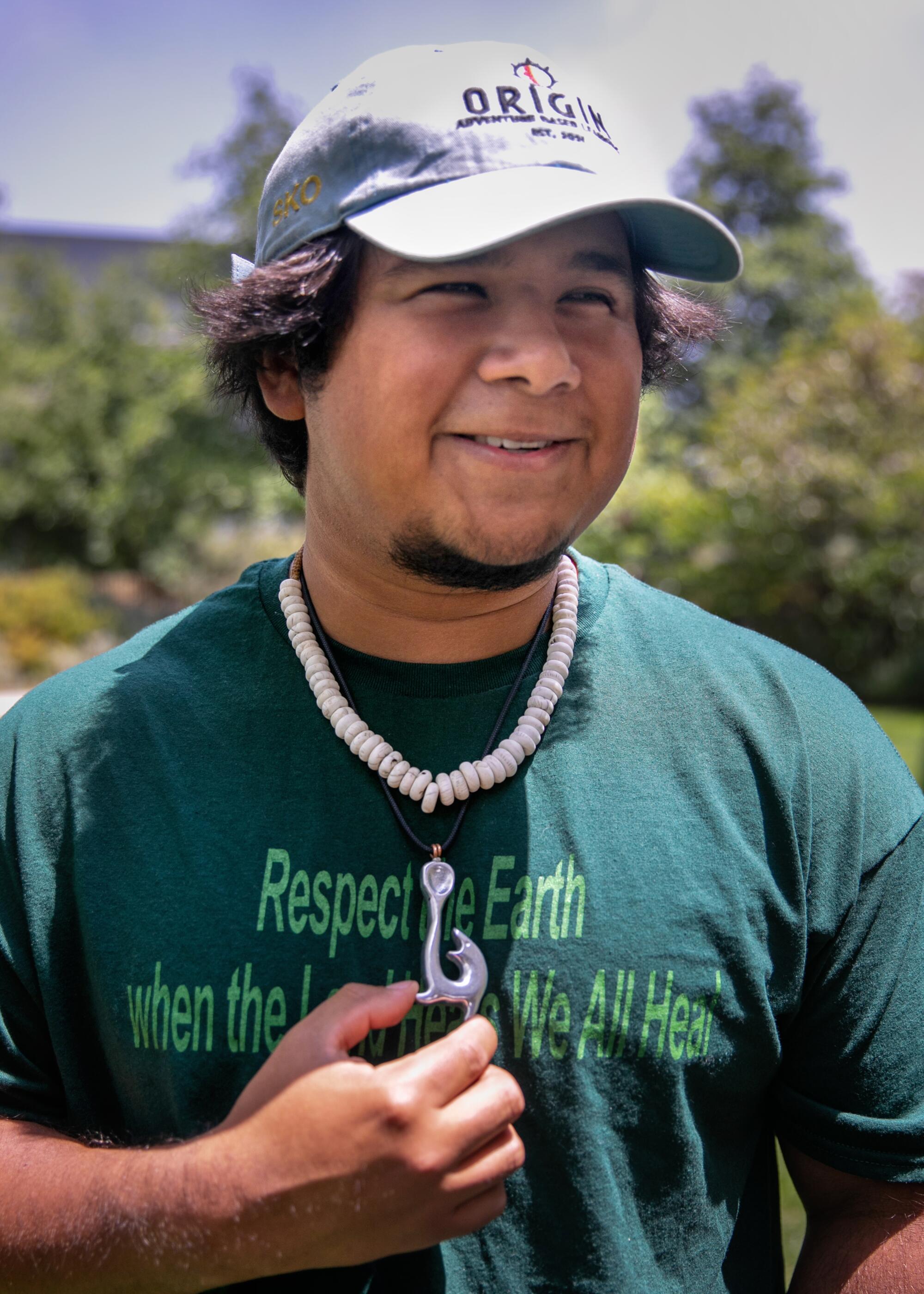
“We have to get permission to go,” Jaimes says. “They search our canoe. They think we’re going to bring invasive species to the island, which they already did.
“It’s pretty hard to go back,” he says, “because we know we can’t stay.”
A lack of affordable boat moorage and communal spaces on the pricey coast makes it difficult for the Chumash to pray and celebrate their culture on land too, Jaimes says.
Wearing a flowing red dress that billows in the wind, D’Arcy stands at a railing and watches her staffers make their way to the river’s edge. There, Lassos and Jaimes pay their respects to her Tongva ancestors — she as host and he as guest.
By naming it the Chief Ya’anna Learning Village, a school official said they will pay tribute to an Indigenous leader who offered refuge to Indigenous immigrants.
Is it futile for Native Americans to expect that California will compensate them for all that was taken, as it will consider doing for Black residents? D’Arcy hesitates before answering. Past payments and land allotments to Indigenous Californians were considered by many to be insulting in their meagerness.
“It takes a lot of money; it takes a long, long time; and we’re talking about communities that don’t have that kind of funding,” she says.
For now, she looks out at the river and mountains and contemplates the common dream of disparate peoples to feel at home in California — if not at peace with its past.
Justice may be long denied for some, but we can draw strength from one another’s stories, she says. We only need to be willing to listen.
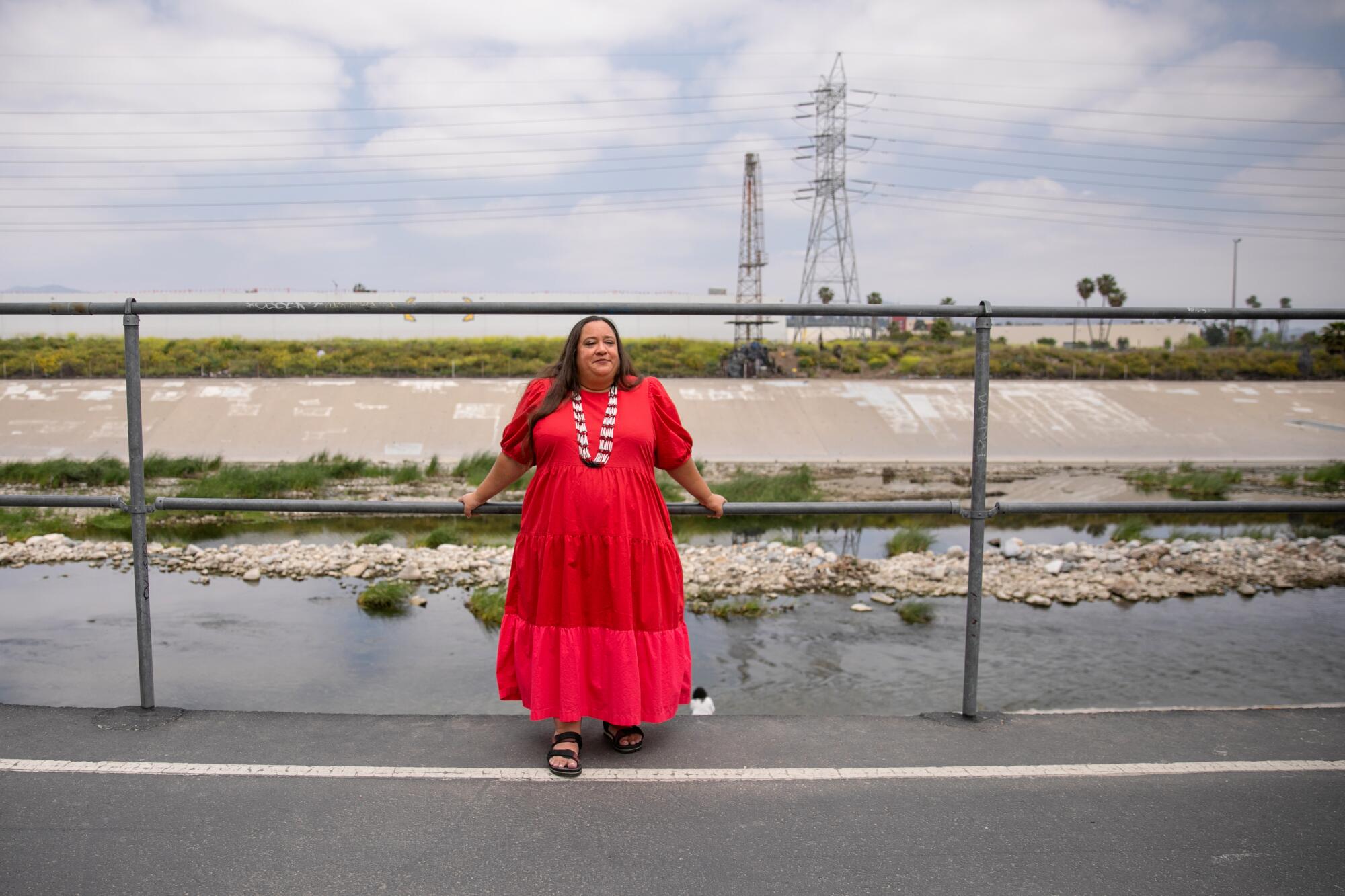
- Share via
Watch L.A. Times Today at 7 p.m. on Spectrum News 1 on Channel 1 or live stream on the Spectrum News App. Palos Verdes Peninsula and Orange County viewers can watch on Cox Systems on channel 99.
More to Read
Sign up for Essential California
The most important California stories and recommendations in your inbox every morning.
You may occasionally receive promotional content from the Los Angeles Times.
